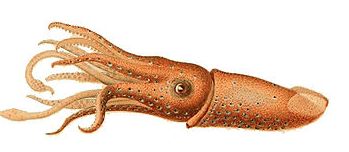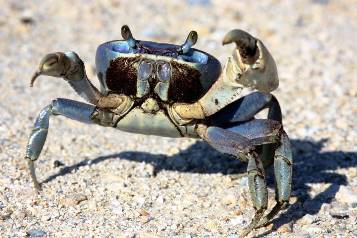Invertebrates

Author: Carl Chun
Back to Animals
What are invertebrates?
Invertebrates are animals that do not have backbones, also called vertebrae or spinal bones.
How are they classified?
Invertebrates as a group do not have a specific classification. Since vertebrates are classified by the chordate subphylum vertebrata, invertebrates are any other animal that is classified outside of that class.
Are there a lot of invertebrate species?
Mammals, amphibians, reptiles, fish, and birds all have vertebrae. This might seem like a lot of the animals you know, but all these animals make up less than 4% of the total animals species. This means that over 96% of all the animal species on Earth are invertebrates.
What are some invertebrate animals?
- Marine Invertebrates - There are a wide variety of interesting ocean animals that are invertebrates. These include sponges, corals, jellyfish, anemones, and starfish.
- Mollusks - Mollusks have a soft body that is covered by an outer layer called a mantle. Many mollusks live inside a shell, but not all of them. Some examples of mollusks include squid, snails, slugs, octopuses, and oysters.
- Crustaceans - Crustaceans are a type of arthropod, meaning that they have jointed legs. They also have an exoskeleton (their bones are on the outside like a shell). Some examples of crustaceans are crabs, lobster, shrimp, and barnacles.
- Worms - The term "worm" is not a scientific word, but is often used to refer to invertebrate animals that don't have legs. Worms may live in the soil, in the water, or even inside other animals as parasites. Some examples include the tapeworm, the leech, and the earthworm.
- Insects - Insects are part of the Earth's largest animal phylum, the arthropods. There are over 1 million species of insects including such animals as the grasshopper, dragonfly, yellow jacket, butterfly, and praying mantis.
- Spiders, Centipedes and Scorpions - These animals are all part of the arthropod phylum. Spiders and scorpions are arachnids because they have eight legs. Centipedes and millipedes are myriapods and have lots of legs. Some myriapods have as many as 750 legs. Some example species include the tarantula and black widow, which are both spiders.
Big and Small
The largest of the invertebrates is the colossal squid. It can grow to over 40 feet long and weigh over 1,000 pounds. The longest invertebrate is the ribbon worm which can grow to 180 feet long. The smallest invertebrate is the rotifer, or wheel animal, which can be as small as 50um. Way too small to see with just your eyes.

Blue Land Crab
Source: USFWS
- Around 23% of all marine organisms are mollusks.
- The only hard body part of an octopus is a hooked beak at the end of its tentacles.
- Some invertebrates, such as echinoderms, do not have heads.
- There are likely millions of invertebrates living in your house right now. They are called dust mites and you can't see them.
- When a crustacean outgrows its shell, it sheds the shell and grows a new one.
- Lobsters, crabs, and shrimp all have 10 legs. The front two legs have pincers they can use to catch food and fight off predators.
- Some scorpion mothers protect their young by carrying them on their backs.
- Centipedes are carnivores which eat insects and worms. They have a poisonous bite to help them kill their prey. Millipedes are herbivores who eat plants and rotting material.
Back to Animals

